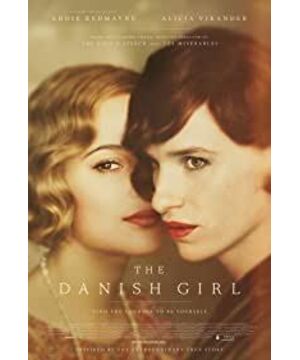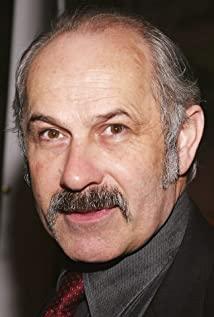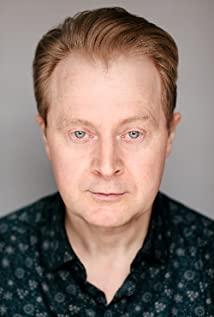Introduction to the legendary story of the world's first transsexual A biographical film about an alternative life by a transgender artist... This issue of "Wheatfield Cinema" will take you into Denmark in the 1920s, watch the natural landscape of northern Europe, feel the beautiful scene like an oil painting, listen to the exciting soundtrack, watch "The King" "Speech" how the director calmly controls the transgender theme, how "Little Freckles" disguise as a woman to kiss Ben Whishaw, and how the heroine of "Ex Machina" bends her straight husband. The Danish Girl, released at the end of 2015, is undoubtedly a strong contender for the Oscars this year. Tom Hopper, who won the Oscar for Best Director for "The King's Speech", once again joined hands with Eddie Redmayne, the new Oscar-winning actor "Little Freckles" after "Les Miserables", to interpret the alternative legend of transgender artists . Based on the real life of Danish artist Aina Wegener, the film uses a linear narrative to show the journey of the world's first transgender person. Throughout Chinese and foreign films, it is not uncommon for men to disguise themselves as women, whether it is Oscar winner Dustin Hoffman's classic comedy "My Fair Lady", or Elf King Lee Pace's maiden film "Crazy Hormones", or Jerry's De Leto won the Oscar for Best Supporting Actor in "Dallas Buyers Club" and "Farewell My Concubine", which made Leslie Leslie internationally famous, are all representatives of this type of theme. This type of film is often favored by the Oscars and the world's three major film festivals because of its portrayal of marginal characters in society and the display of the ultimate state of human nature. The director's ambition can be seen from the choice of subject matter, and the combination of Oscar's best director and best actor has made "The Danish Girl" a lot of attention before it is released. The film continues the steady and solid narrative of the director's "The King's Speech" and "Les Miserables", and truly reproduces the scenes and costumes of the 1920s. With beautiful and picturesque shots, beautiful and beautiful music, and the actors' penetrating performances, the film will be a piece of music. The controversial story is told beautifully. Despite mixed reviews, this is still a movie worth seeing, showing us what life can take, and it's shocking, but ultimately beautiful. 1. Awakening and Transformation of Gender Identity The story begins in Copenhagen in 1926, when the painter Aina and his wife Gerda attended the celebration banquet of their exhibition together. At that time, they were a loving couple with a common pursuit, a tacit disposition, and a deep love for each other. However, those desires hidden in the blood were awakened by chance, and then flourished, and finally bloomed flowers that were not tolerated by the world. Because the model missed her appointment, Gerda persuaded Aina to put on women's clothes to help herself complete the painting, not wanting those soft and delicate fabrics to inspire Aina's most secret desires. The film uses a shallow depth of field shot of the costume, with the close-up of the character's face, to complete the process of Aina's inner awakening. The film uses many understated details to hint at the allure of clothing for Aina. He likes to stroke the women's skirts in the dance company's dressing room, and he often watches his wife take off her stockings and try to slip a silk petticoat under the men's shirt. So in the name of the game, Aina embarked on the road of cross-dressing. Bright red lips, delicate eyeliner, charming wig, and soft skirt allow him to appear in front of the public as Lily, but Aina, who is wrapped in layers, shows the truest self. At the dance, Aina, who was dressed as a woman, was naturally watched by men from all over the world. The film draws out the patriarchal consciousness implicit in modern painting through the identity of the protagonist painter. Modern Western body painting naturally includes men's peeping at women's bodies, and the women presented in the paintings are all flesh captured by men's sight. The dialogue between Gerda and the male model in the film can be seen as a declaration of feminism, and as a female painter, Gerda makes a mockery of the art field in the context of patriarchy. Another function of this dialogue is to lay the groundwork for the next episode. When Aina went from being shy and embarrassed at first to finally being comfortable, the film also completed Aina's gender transformation through the male gaze. The whole film shows the entire process of Aina's transformation into a woman in detail, and the difficulty of interpretation is conceivable. And Eddie Redmayne's performance in the play once again confirmed that he deserves the title of best actor. The actor born in the 1980s who followed the traditional drama path of British actors and started with Shakespeare's stage play, from the handsome revolutionary young Marius in "Les Miserables", to the physicist who explored the "Theory of Everything" with a damaged body Hawking, to the now androgynous "Danish girl", has completed his transformation step by step. It can be said that it is Eddie's meticulous interpretation that makes Aina so brilliant and touching in the movie. 2. The mirror surface, the unstoppable heart The former Aina was just a pale and weak young man, but Lily's appearance completely ignited his life. This will be an irreversible process, and there are only two paths in front of Aina, either bloom or perish. So Aina, who was unable to suppress his inner desires, ran to the dance troupe's dressing room again, where he could reveal himself without any scruples. The clothes taken off are the disguise that has faded, Aina standing in front of the mirror is the truest self, he strokes his body, trying to hide his masculine symbol. From this, we find that Aina is no longer dissatisfied with cross-dressing, but wants to become a complete woman, and his gender transformation has turned from psychological to physical. Lake surface, glass, mirror, the film illuminates Aina's hidden heart through the repeated mirror surface. He imitated the prostitute's posture through a glass. The depth of field shot was constantly changing between Aina and the prostitute. When the prostitute's charming face and Aina's face appeared in the lens at the same time, they naturally formed a group of mirrors. The one outside the glass seemed to be the woman in the man's body. The portrait is a deformation of the mirror surface. Gerda's paintings show a self that even Aina herself can't imagine. She is innocent and charming, shy and elegant, and she is indescribably beautiful. Just like the dialogue between Gerda and Aina, although Lily has always existed in Aina's heart, it was Gerda who made her come alive. When Aina takes a self-portrait in the mirror, the camera switches between Aina's nudes and Gerda's drawings, making Aina and Gerda's Danish girl fit into each other until they become one. Gerda Wagner never appeared as a vassal of her husband. In the relationship between the two, Gerda played a leading role. She first approached Aina, took the initiative to kiss Aina, and even was quite strong between the beds. She loved this man, she painted him, taught him to dress up as a woman, but then Aina changed beyond Gerda's expectations. When she sees Aina in women's clothing kissing Henrique, played by Ben Whishaw, she realizes that Aina's transformation will take him away from her. Perhaps what really made Gerda with tenacity unacceptable was not Aina's transformation, but his final departure. She took him to see a doctor again and again, begging her husband to return to her side, but the pain of losing him was not worth her love for him, so she chose to accept, choose to fulfill, and even supported her husband's transition, and stayed with him all the time. around. The Swedish actress Alicia Vikander, who became popular for her roles in "Royal Romance" and "Ex Machina", has a good grasp of Gerda's image and dedicated her best acting skills since filming in the film. . Just as Gerda is not Aina's accessory, Vikander is not Redmayne's foil, she has her own brilliance. 3. Immortality: The eternal pursuit of beauty The quagmire in Aina's heart eventually led him away from Gerda's side. The kiss with Henrique, and even more intimate gestures, made Aina clear about her perception. He's not a transvestite, he's not gay, he's a real transgender who wants to like men as a woman. It is also out of this impulse that he will meet and even seduce his former friends in women's clothes. And when all else fails, he chooses to use surgery to turn himself into a real woman. After the operation, Aina became confident and beautiful, and his gestures were full of anger. However, he also paid a huge price for this, and even finally paid his own life. The film does not just stop at the survival dilemma faced by transgender people, but elevates the whole story to the pursuit of beauty. Aina is not just a transgender person, but an artist. The pursuit of beauty is his lifelong wish, so when he first appeared in women's clothing at the ball, he was not worried about his own cross-dressing being discovered, but whether he was beautiful. The pursuit of beauty. Before Lily was awakened, Aina repeatedly described the scenery of her hometown and practiced her pursuit through painting. And when he finds that all this is far less than the beauty buried deep in his heart, he will devote himself to it without hesitation, whether it is physical pain or rejection from the world, it doesn't matter to him anymore. From then on, his spiritual world is no longer a mere five trees, but a bunch of distinctive flowers gathered together. The open fields, the silent mountains, the woods in the countryside, and the few empty shots at the beginning of the film showing the natural features of Aina's hometown of Wadler are exactly the film's presentation of the beauty that Aina pursues. The whole movie shows Wilde's aestheticism. Many scenes in the play refer to the oil paintings of the 1930s. Whether it is the classical composition, the white lighting, or the color matching of the characters' costumes, they all show extremely high The aesthetics fits the temperament of the protagonist artist. The story takes place in Denmark in the 1920s. Perhaps only in this country, which has been famous for its social tolerance for more than a century, can such a legend emerge and such a maverick soul be nurtured. At the end of the film, Gerda and Hans arrive at the hometown where Aina grew up. The free-flying silk scarf was like Aina's free soul. He finally returned to his hometown, to the mountains, rivers, lakes and seas he painted, and back to his mother's arms, where he will gain immortality.
View more about The Danish Girl reviews











